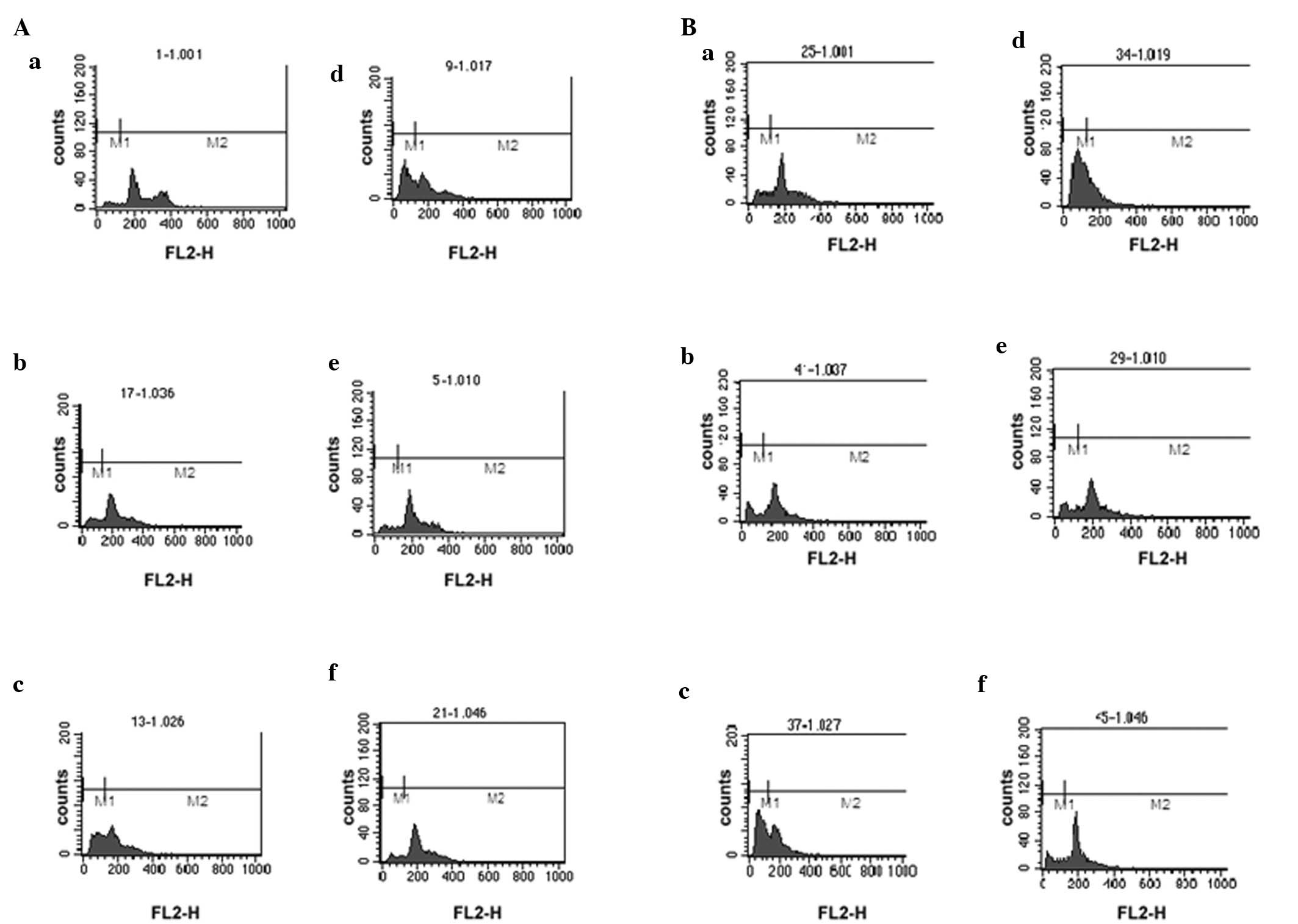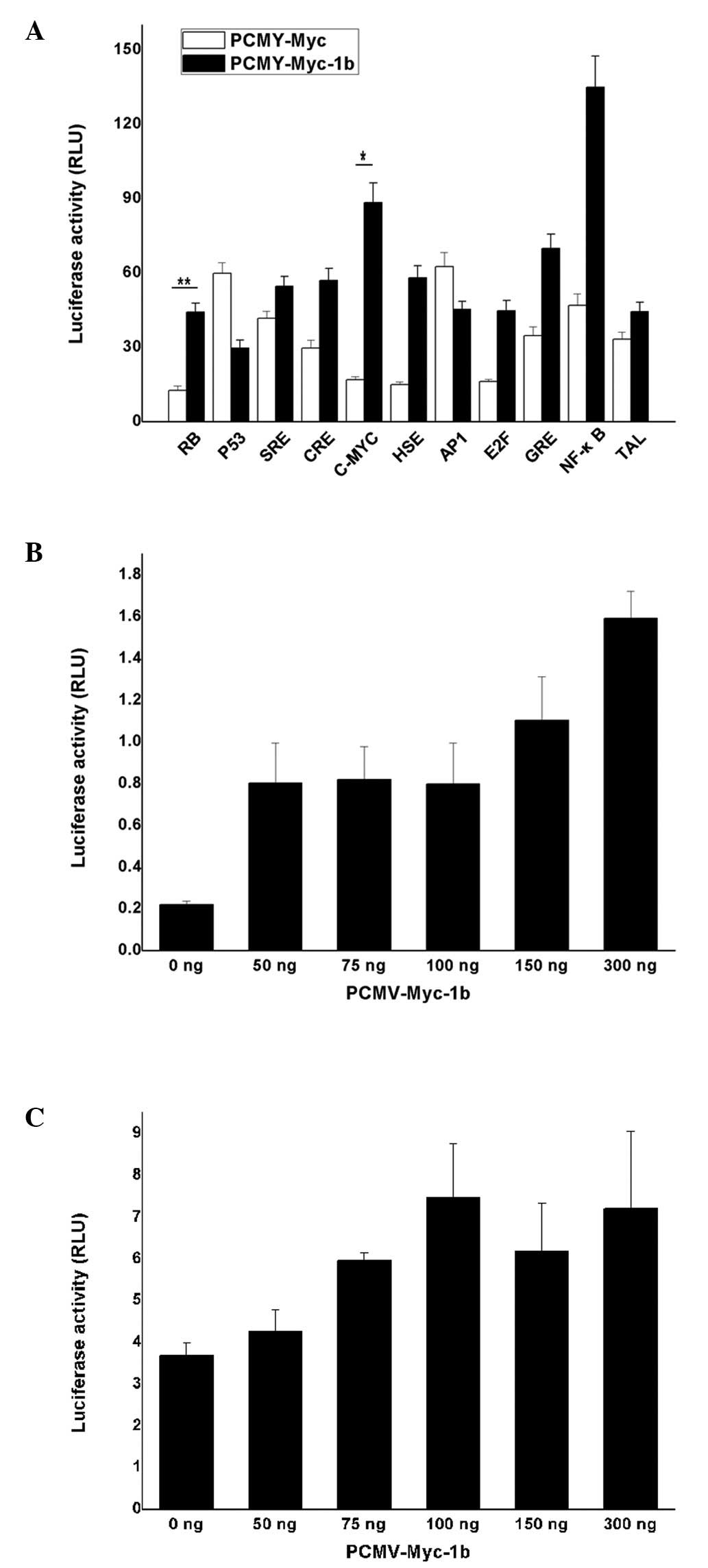|
1
|
Nakagawa K, Noguchi Y, Uenaka A, Sato S,
Okumura H, Tanaka M, Shimono M, Ali Eldib AM, Ono T, Ohara N,
Yoshino T, Yamashita K, Tsunoda T, Aoe M, Shimizu N and Nakayama E:
XAGE-1 expression in non-small cell lung cancer and antibody
response in patients. Clin Cancer Res. 11:5496–5503. 2005.
View Article : Google Scholar : PubMed/NCBI
|
|
2
|
Ji Y, Zhang W and Gu L: mRNA expression of
the XAGE-1b gene in human acute leukemia. Int J Hematol.
91:209–212. 2010. View Article : Google Scholar : PubMed/NCBI
|
|
3
|
Ali Eldib AM, Ono T, Shimono M, Kaneko M,
Nakagawa K, Tanaka R, Noguchi Y and Nakayama E: Immunoscreening of
a cDNA library from a lung cancer cell line using autologous
patient serum: identification of XAGE-1b as a dominant antigen and
its immunogenicity in lung adenocarcinoma. Int J Cancer.
108:558–563. 2004.PubMed/NCBI
|
|
4
|
Cilensek ZM, Yehiely F, Kular RK and Deiss
LP: A member of the GAGE family of tumor antigens is an
anti-apoptotic gene that confers resistance to Fas/CD95/APO-1,
interferon-gamma, taxol and gamma-cirradiation. Cancer Biol Ther.
1:380–387. 2002. View Article : Google Scholar : PubMed/NCBI
|
|
5
|
Gu X, Zheng M, Fei X, Yang Z, Li F, Ji C,
Xie Y and Mao Y: ZNF435, a novel human SCAN-containing zinc finger
protein, inhibits AP-1-mediated transcriptional activation. Mol
Cells. 23:316–322. 2007.PubMed/NCBI
|
|
6
|
Egland KA, Kumar V, Duray P and Pastan I:
Characterization of overlapping XAGE-1 transcripts encoding a
cancer testis antigen expressed in lung, breast, and other types of
cancers. Mol Cancer Ther. 1:441–450. 2002.PubMed/NCBI
|
|
7
|
Elmore S: Apoptosis: a review of
programmed cell death. Toxicol Pathol. 35:495–516. 2007. View Article : Google Scholar : PubMed/NCBI
|
|
8
|
Gregory CD and Pound JD:
Microenvironmental influences of apoptosis in vivo and in vitro.
Apoptosis. 15:1029–1049. 2010. View Article : Google Scholar : PubMed/NCBI
|
|
9
|
Hanahan D and Weinberg RA: The hallmarks
of cancer. Cell. 100:57–70. 2000. View Article : Google Scholar
|
|
10
|
Wang J, Dong FS, Dong Q, Gu HT and Li HX:
The study of apoptosis of salivary adenoid cystic carcinoma in nude
mice. Zhonghua Kou Qiang Yi Xue Za Zhi. 38:358–360. 2003.(In
Chinese).
|
|
11
|
Fukuda M, Kusama K and Sakashita H:
Cimetidine inhibits salivary gland tumor cell adhesion to neural
cells and induces apoptosis by blocking NCAM expression. BMC
Cancer. 8:3762008. View Article : Google Scholar : PubMed/NCBI
|
|
12
|
Igney FH and Krammer PH: Death and
anti-death: tumour resistance to apoptosis. Nat Rev Cancer.
2:277–288. 2002. View
Article : Google Scholar : PubMed/NCBI
|
|
13
|
Hehlgans T and Pfeffer K: The intriguing
biology of the tumour necrosis factor/tumour necrosis factor
receptor superfamily: players, rules and the games. Immunology.
115:1–20. 2005. View Article : Google Scholar : PubMed/NCBI
|
|
14
|
Li H and Lin X: Positive and negative
signaling components involved in TNF alpha-induced NF-kappaB
activation. Cytokine. 41:1–8. 2008. View Article : Google Scholar : PubMed/NCBI
|
|
15
|
Logan RM, Stringer AM, Bowen JM, Yeoh AS,
Gibson RJ, Sonis ST and Keefe DM: The role of pro-inflammatory
cytokines in cancer treatment-induced alimentary tract mucositis:
pathobiology, animal models and cytotoxic drugs. Cancer Treat Rev.
33:448–460. 2007. View Article : Google Scholar
|
|
16
|
Ghali O, Chauveau C, Hardouin P, Broux O
and Devedjian JC: TNF-alpha’s effects on proliferation and
apoptosis in human mesenchymal stem cells depend on RUNX2
expression. J Bone Miner Res. 25:1616–1626. 2010.
|
|
17
|
Kim JJ, Lee SB, Park JK and Yoo YD:
TNF-alpha-induced ROS production triggering apoptosis is directly
linked to Romo1 and Bcl-X(L). Cell Death Differ. 17:1420–1434.
2010. View Article : Google Scholar : PubMed/NCBI
|
|
18
|
Liang XH, Kleeman LK, Jiang HH, Gordon G,
Goldman JE, Berry G, Herman B and Levine B: Protection against
fatal Sindbis virus encephalitis by beclin, a novel
Bcl-2-interacting protein. J Virol. 72:8586–8596. 1998.PubMed/NCBI
|
|
19
|
Zhuge J and Cederbaum AI: Serum
deprivation-induced HepG2 cell death is potentiated by CYP2E1. Free
Radic Biol Med. 40:63–74. 2006. View Article : Google Scholar : PubMed/NCBI
|
|
20
|
Gao F, Hu XY, Xie XJ, Xu QY, Wang YP, Liu
XB, Xiang MX, Sun Y and Wang JA: Heat shock protein 90 protects rat
mesenchymal stem cells against hypoxia and serum
deprivation-induced apoptosis via the PI3K/Akt and ERK1/2 pathways.
J Zhejiang Univ Sci B. 11:608–617. 2010. View Article : Google Scholar : PubMed/NCBI
|
|
21
|
Eilers M and Eisenman RN: Myc’s broad
reach. Genes Dev. 22:2755–2766. 2008.
|
|
22
|
Oster SK, Ho CS, Soucie EL and Penn LZ:
The myc oncogene: MarvelouslY Complex. Adv Cancer Res. 84:81–154.
2002. View Article : Google Scholar : PubMed/NCBI
|
|
23
|
Mallette FA, Gaumont-Leclerc MF, Huot G
and Ferbeyre G: Myc down-regulation as a mechanism to activate the
Rb pathway in STAT5A-induced senescence. J Biol Chem.
282:34938–34944. 2007. View Article : Google Scholar : PubMed/NCBI
|
|
24
|
Cappellen D, Schlange T, Bauer M, Maurer F
and Hynes NE: Novel c-MYC target genes mediate differential effects
on cell proliferation and migration. EMBO Rep. 8:70–76. 2007.
View Article : Google Scholar : PubMed/NCBI
|












